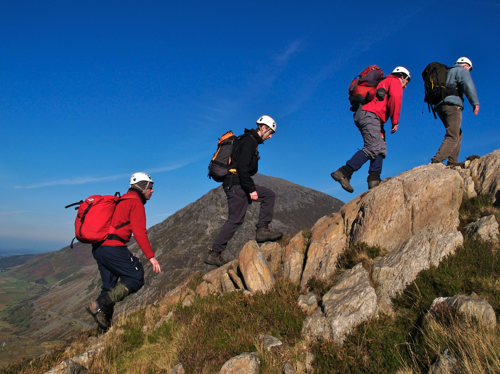5 Minutes with Tom Robinson
Mark discussed Tom’s background, views on sustainability within the built environment and what plans Tom has now

Having recently completed a mini-MBA through Chester University and IN-PD, our Head of Built Environment, Mark Goldsmith, was tutored by Tom Robinson, who has held many Managing Director/CEO roles and was a former Chief Sustainability Officer at Carillion.
Mark has recently interviewed leaders from within the world of sustainability within the built environment, and so the opportunity to discuss Tom’s background, views on the subject and to find out more about what plans Tom has now, was too good to ignore.
Here’s what they discussed:
Mark: Thank you for sharing your experience with us during the mini-MBA Tom. It was fascinating to hear how you have connected some of the theoretical knowledge to your previous positions within construction. Which topics covered within the MBA do you enjoy teaching the most, and is there a key area that you feel can be easily applied to many businesses in terms of quick fixes?
Tom: I enjoy teaching both leadership and strategy because they are both fundamental to every business and there is never any shortage of opinions and experiences that delegates can draw upon for discussion and shared learning.
Leaders need to demonstrate what is important through what they spend their time on and what they talk about. I commonly find a disconnect between how leaders prioritise their time and what they say is important. Whilst fixing this particular issue should be simple and straightforward it is dependent on a leader’s level of self-awareness and openness in team behaviours to identify it, followed by concerted effort to change. It is relatively rare for these conditions to exist without real work to create them.
Mark: Your background is pretty varied in terms of the roles you have covered. You’ve mentioned that you were the first Chief Sustainability Officer for Carillion back in 2011. I’ve spoken with several people lately who are entrenched in this subject. What interests me is how you applied sustainability issues in a pragmatic manner, to better improve the business. Can you expand upon this?
Tom: I would not describe myself as a “sustainability professional”, but I do care about ethical and responsible behaviour and it is crystal clear to me what this means in terms of social and environmental consideration. The very existence of businesses, their profitability and their long-term success is inextricably linked with how they connect with and impact their stakeholders in social, environmental and economic ways. In 2011 I was asked to implement Carillion’s 2020 Sustainability Strategy and demonstrate that this had a direct and positive impact on the bottom line. Although at times a real battle, I was very proud that during my 2 years in that role we were able to demonstrate reduced waste, reduced energy/fuel usage, reduced water etc. alongside various other environmental and social initiatives which collectively translated into 20% reduction in carbon footprint and £30m additional profit over 2 years. Having left the company in 2013 and knowing what happened 5 years later is a source of real sadness for many reasons.
Mark: A lot of your work has revolved around restructuring of businesses, taking out waste and adding value. What are the common themes you tend to come up against when inheriting a business in terms of bottlenecks or barriers, and what steps do you initially take?
Tom: Working in the built environment sector it will not surprise many that focusing on cashflow and working capital always requires some careful attention. But beyond cash, the first consideration in any business is making sure that the products and services being provided to customers (both the paying customer and/or any end users) are as good as they can be and focusing on fixing these issues first. There are likely to be process and people issues which emerge from understanding customer satisfaction. But in order to address any of the above requires a motivated team who enjoy their work. So, in short, I spend a good deal of time on the team in order to make sure we are satisfying our customers. Clarity on accountability, responsibility and getting a good level of empowerment throughout the team does reduce bottlenecks and drives efficiency and waste reduction.
Mark: Added to this, what common mistakes have you witnessed other executive level leaders making when engaging staff in change and restructure?
Tom: Thinking you know the answers before taking the time to understand the people and the specific circumstances is a certain route to failure. Even if you have great instincts and your hypotheses (based on experience) are close to the mark it is vital to engage the team with their input and translate that into proposals. Whilst there is no guarantee that change will not meet resistance, the more genuine engagement, the greater the likelihood of success.
Mark: And finally, although you’re working with Gunnercooke LLP, what is next for you career wise Tom?
Tom: Having been in permanent executive roles within companies for nearly 30 years, I am still adjusting to life as a business advisor, consultant, interim . . . but I am really enjoying using my skills and experience to help others and add-value to a wider variety of businesses. Fundamentally, I am motivated by helping people achieve business objectives and I am pretty flexible about what form that takes in terms of employment. Gunnercooke is a great place to be in terms of a growing multi-disciplinary offering alongside an enviable legal skillset. We have an exciting new NEDplus offering and I am also enjoying tutoring within the various development services on offer.
About the author
With 25 years of recruitment experience under his belt, Mark has spent the last 21 focused on Building Products & Construction.
Read more >



